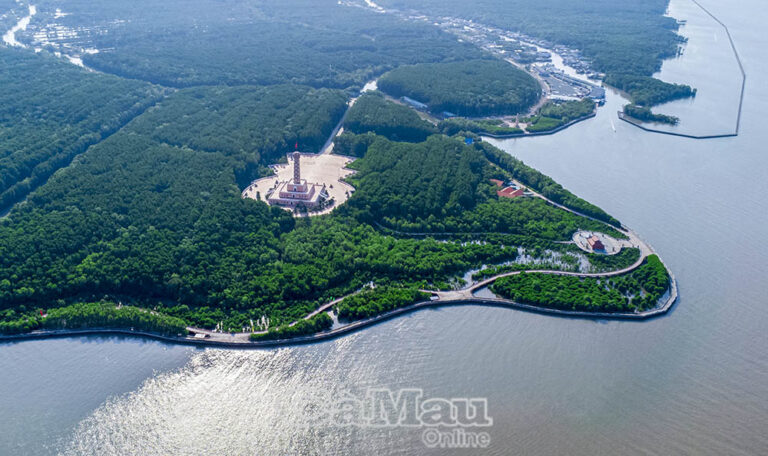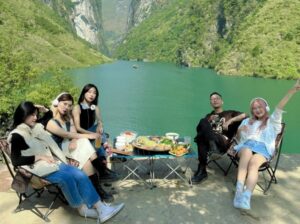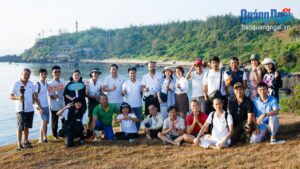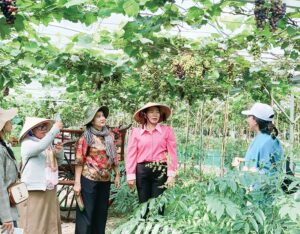The celebration of 30th anniversary (1993-2023) of the Complex of Hue Monuments and the 20th anniversary (2003 - 2023) of Hue Royal Court Music being honored by the UNESCO as world heritages took place during June 16-18. On this occasion, Thua Thien Hue Weekly had a conversation with Mr. Hoang Viet Trung, Director of Hue Monuments Conservation Center about the process of preserving and developing heritage.
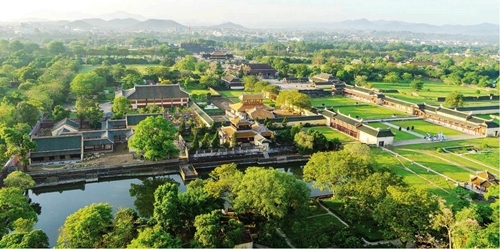
After 30 years of the Complex of Hue Monuments, and 20 years of Hue Royal Court Music being recognized by UNESCO as world heritages, how have they been preserved and promoted?
It is clear that, many areas in the Imperial Citadel were ruined after the war. Many buildings disappeared, such as Can Chanh Palace, Khon Thai Palace, Kien Trung Palace, and Thieu Phuong Garden. After the war, little attention was paid to the conservation and investment resources for conservation works were extremely limited due to short-sightedness and backwardness.
The images of ruins and desolation and emergency rescue are no longer seen. More than 200 large and small works have been restored and preserved, basically, the shape of the Citadel and the mausoleums has been restored. This is a good luck and is the effort of many generations.
In the first stage, we had very little knowledge and experience about restoring and reviving work. All we had was enthusiasm. We had to do research in the materials, restoration design, wood structure to collecting historical documents and books left through wars, natural disasters and enemy sabotage. Up to now, Hue Monuments Conservation Center, according to experts’ assessment, has now had well trained and effective working staff that is suitable for a unit majoring in preservation, conservation and promoting the values of relics.
Intangible heritage is increasingly affirmed in terms of its branding values. Since Hue Royal Court Music was recognized as a world cultural heritage, Hue Traditional Royal Art Theater has collected and restored more than 70% of the treasures of Royal Court Music. The theater has both researched and performed, and is currently building a documentary system to enhance the value of royal arts, and to introduce the country’s quintessence to the world.
In order to urgently rescue the heritage and gain today’s achievements, has Hue Monuments Conservation Center encountered many difficulties and made great efforts?
It seems impossible to quantify efforts. After 30 years, the achievement today has been the contribution of many generations with so much enthusiasm, and efforts. The building up of the heritage profile for the Complex of Hue Monuments to submit to the UNESCO was unprecedented, but the Center determined to do it with strong desire that the relic would be saved after becoming a world heritage site.
At first, there were many difficulties that the restoration work has to encounter. The collection of documents after the war was still very limited while restoration required documents of various types, especially the photo documents. We have to collect each photograph, having contact with the Ministry of Foreign Affairs and various organizations abroad, especially in France.
Diplomatic relations then were not quite as favorable as they are now. While the principle of restoration is to ensure the originality, the remaining documents were very few, requiring the combination of different methods, such as comparing with works of the same age and doing logical analysis.
Another difficulty involves resources for restoration work. It often took a long time for restoration of a relic that required a large investment fund while the resources are insufficient. It also took a long time for the research and paper works before the restoration process. For example, the pre-restoration took 20 years for Can Chanh Palace project and 10 years for Kien Trung Palace.
In addition to these difficulties, is the center under pressure between conservation and development?
The contradiction between conservation and development is the biggest challenge for Hue heritage in the context of increasing urbanization. This issue has also been repeatedly reminded of by the World Heritage Committee. The attention and interaction of the society with the heritage is also necessary as we need multi-dimensional and objective opinions. Those people concerned about it are those who love the heritage and fear that it will be in danger.
In reality, solutions to combine preservation and promotion of the heritage values have been considered not only in Vietnam, but also in other countries around the world. The promotion of values has implied sustainable development. The humane point of view of UNESCO is that conservation does not mean doing nothing. It should not affect the heritage and is under the provisions of the Law on Cultural Heritage.
There is now no specific rule for the promotion of heritage values. The Hue Monuments Conservation Center has made many proposals to governmental ministries and agencies to remove barriers and have guidance to adjust of legal regulations to fit reality, that is, conservation supports the promotion of heritage for benefits. In many conferences, cultural heritages and relics managers are also looking forward to having favorable and tight regulations with the situation of management, conservation and promotion of heritage values.
Hue Heritage has been through the stage of emergency rescue and in the process of sustainable development. Apart from the attention of the Communist Party, the State and the people, there is also the contribution of the international community. Can you provide more information about this?
Hue Heritage has received much valuable support and attention; and international organizations have funded over 10 million USD. The UNESCO has also sent the architect Pierre Pichard to Hue for survey.
Returning to Paris, Mr. Pichard submitted to the UNESCO a report entitled “Preserving Hue Monuments”. In Hanoi in 1981, Mr. Amadou Mahtar M'Bow, Director General of the UNESCO then appealed to save Hue and launched an international campaign to help preserve and restore Hue relics back to their originality. The Hue - UNESCO team started to work together to build a heritage profile to submit to the UNESCO, and the significant contributions of some international experts such as Polish architect Kazik who died in Hue while helping to preserve the heritage of The Mieu Temple.
As a result, there have been many accomplishments in the work of preserving and restoring relics shown in the main aspects of work such as the preservation and restoration of relics, the preservation of intangible culture, the preservation and embellishment of the landscape and environment in the heritage zones, the application of conservation scientific achievements and the training of human resources, and the promotion of heritage values. The monuments have now got through the stage of emergency rescue and transitioned to a stage of stability and development.
After a journey of 30 years with many achievements, the center has had many plans to continue preserving, restoring and promoting heritage values, hasn’t it?
The next stage aims at developing the heritage sustainably, increasing its cultural and historical value so that visitors can intuitively feel the potential value and the story behind each heritage. Now that there are architectural entities; we focus on embellishing the system of landscape infrastructure associated with the architectural work in order to promote the intrinsic value of the heritage.
The center is currently developing a project to preserve and promote the value of the Hue Monuments Complex until 2030, with a vision towards 2045. Particularly, the “nuclear” role of the monument complex is identified in the development of the province, making it a special heritage city.
We have also worked out plans to preserve the cultural heritage, the natural landscape, and the ecological environment, creating and restoring the space associated with the heritage so that the monument complex becomes the nucleus and a driving force in the establishment and development of a heritage urban area in accordance with the strategies issued by the central government and the province.
Thank you very much!
Interviewed by Cat An


